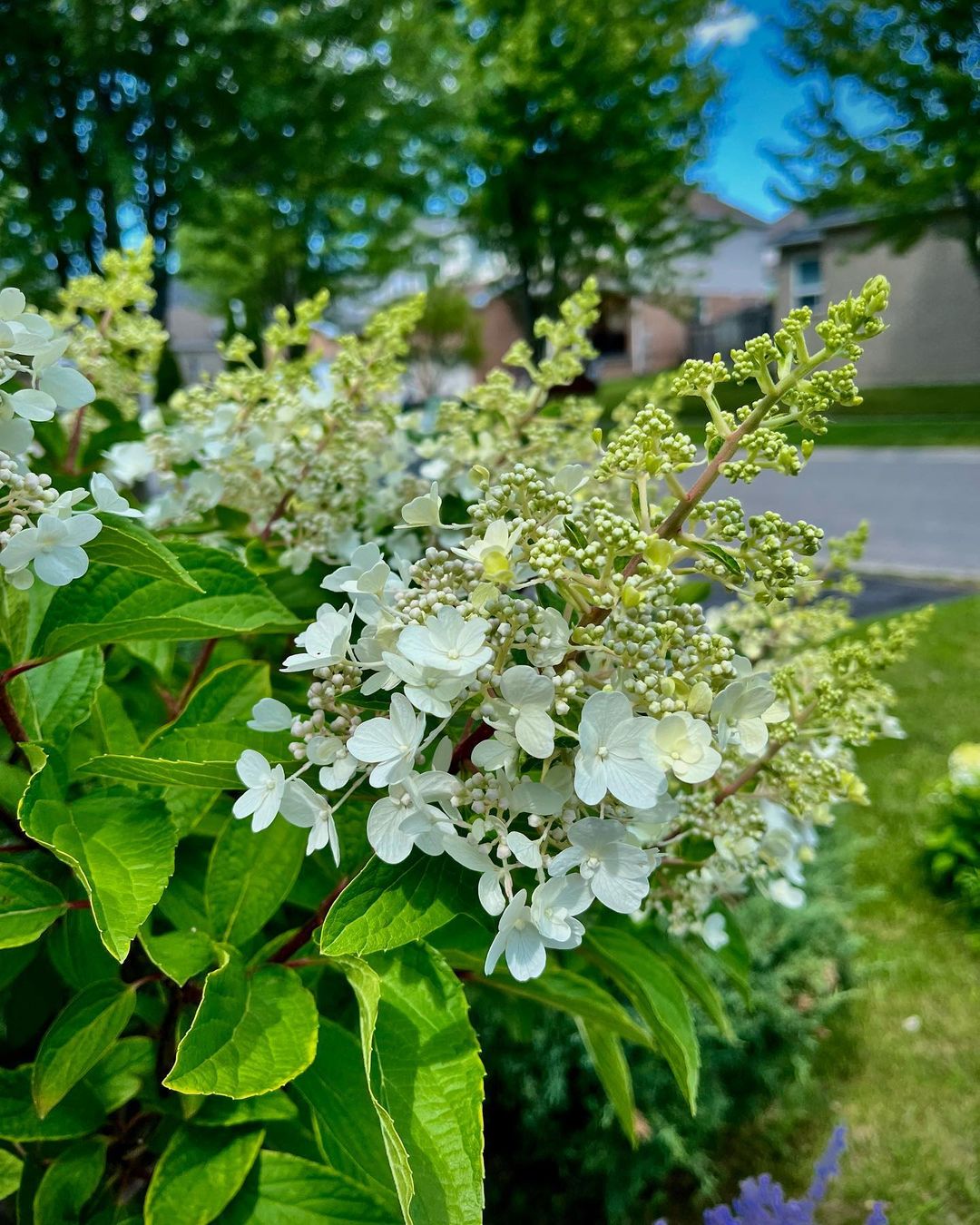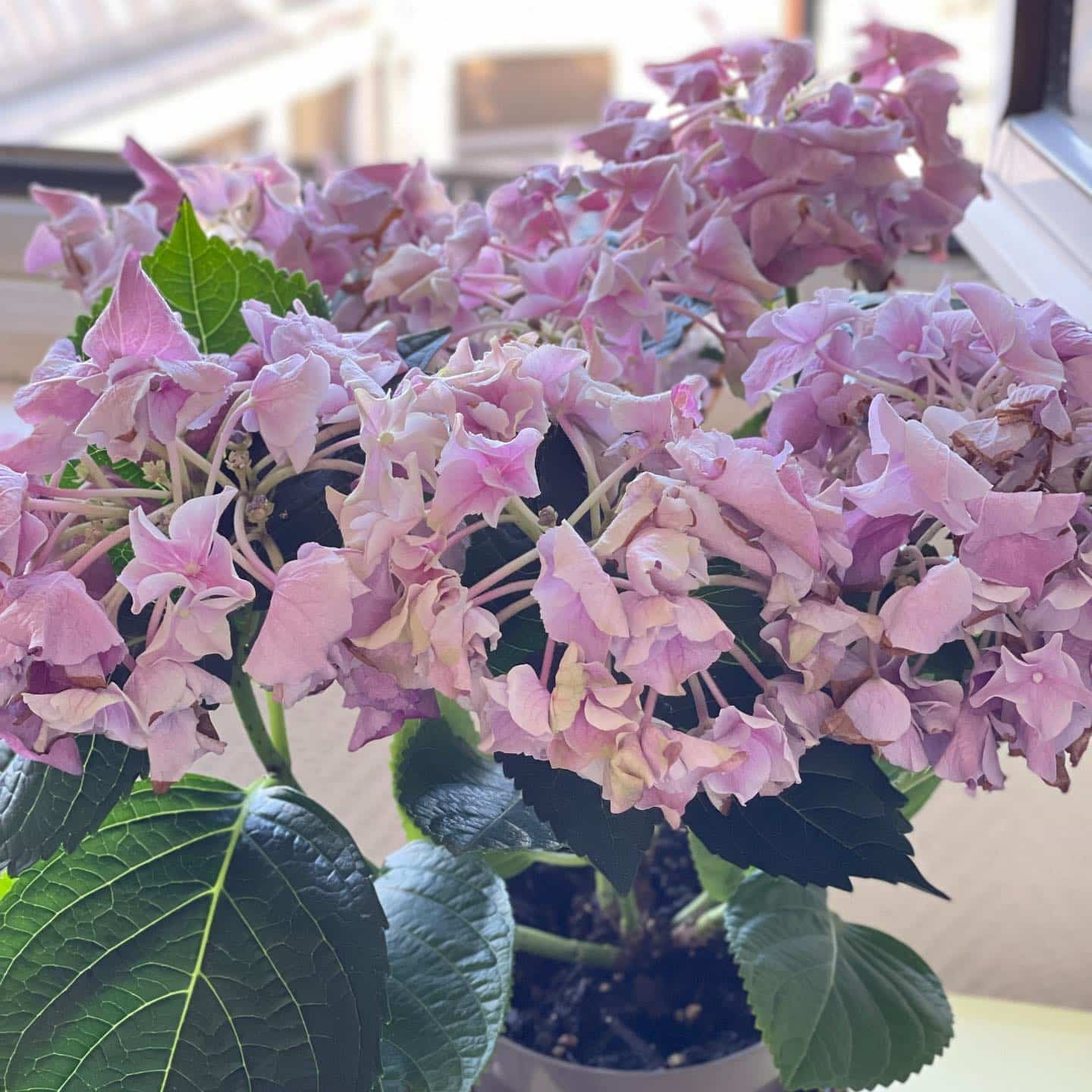Pinky Winky Hydrangea is an easy plant to grow and care for, but sometimes it might be laced with problems.
If you are able to identify the problems in time, you might be able to save the plant from ultimate demise.
These beautiful two-toned plants can boost the aesthetics of any household, making it more important to protect them from problems.
Let us look at some of the common Pinky Winky Hydrangea problems and how to cure them.
Table of Contents Show
Introduction To Pinky Winky Hydrangea
The name ‘Pinky Winky Hydrangea’ might sound cute, but that notion will change once you see the large, multi-colored flowers.

One of the Panicle Hydrangea varieties, this plant starts blooming during June-July. The flowers are white at first and gradually turn pink in the latter periods, making the flower two-toned.
For optimum results, provide this plant with well-draining but moisture-retaining soil and bask them in full sun with some curtains in between.
This easy-to-grow plant, which is also rabbit and deer resistant, can be used to decorate the borders and hedges of your garden.
If you are planning to get one for your garden, you must know the following facts about this plant:
- The flowers have the pleasant scent of honey and vanilla.
- These plants are for you if you reside in USDA zones 3-8.
- Pinky Winky Hydrangea can grow 70-100 inches if no care problems occur.
- They will bloom until the early fall i.e., September.
Now let us look at some of the Pinky Winky Hydrangea Problems.
Problem 1: No flowers
If you have waited till July, and your plant still shows no signs of flowering, you might be messing up the care schedules.
So, what could be the thing you are doing wrong? Look at the causes below.
Causes Of No Flowers
- Is your Pinky Winky Hydrangea getting enough sunlight? Plants convert the energy from the sun to produce blooms. So, your plant may lack 6 hours of sunlight daily to produce blooms.
- During the hot, sweltering summer days, this Hydrangea becomes thirsty and requires frequent watering. Lack of watering may be a prime cause of it not flowering.
- Lack of fertilizer sometimes plays a pivotal role in not letting the plant flower.
How To Fix No Flowers
- Try moving the plant to a sunnier location to fulfill its plant needs.
- You need to water the plant to fulfill its watering needs i.e., when the top 2 inches of the soil is dry.
- To induce the blooms, you must fertilize the plants with slow-release bloom booster fertilizers.
Problem 2: Wilting
One of the major Problems of the Pinky Winky Hydrangea is that the whole foliage may wilt and look ugly.

Let us look at the major causes of the above phenomenon.
Causes Of Wilting
- The prime cause of your plant wilting may be the lack of water.
- Your plant may wilt if the weather outside is very hot and dry.
- Check the roots if your plant is wilting suddenly, as it may have incurred root rot.
How To Fix Wilting
- The foremost fix for this Pinky Winky Hydrangea Problem is watering the plant often.
- You can mulch around the base of the plant so that it retains moisture.
- Relocate the plant to a location where it would get a bit of afternoon shade.
- Check for root rot in your plant and remove damaged, brown, mushy roots.
Problem 3: Pests And Diseases
The pesky little bugs and the problems that show up late in the plants are one of the major trouble carriers.
Pests and diseases can destroy your perfectly blooming Hydrangeas and leave you in distress.
Let us look at the common pests and diseases that will attack your plant with the symptoms.
Common Pests and Diseases That Attack Pinky Winky Hydrangeas
- Aphids: Curled, yellow leaves and slow growth.
- Spider Plants: Webs on the leaves and tiny white-yellow spots on the leaves.
- Slugs: Slimy trails on plants and holes on leaves.
- Powdery Mildew: White powdery, mold-like spots on foliage.
How To Control Pests And Diseases
- Use organic methods like neem oil and insecticidal soap to eliminate pests.
- As most diseases are fungal, use proper fungicides to cure the diseases.
- If the infection spreads, prune off the infected parts to stop the invasion.
Editor’s Suggestions
Prevention is Better Than Cure!
For the love of plants, you would be happier if you prevented Pinky Winky Hydrangea Problems beforehand.
Ensure the plant is in the optimum location and getting enough inspection from your side.
Make a pruning routine to prune the plant in February and March and fertilize them in these months.
Good luck with your plant!
